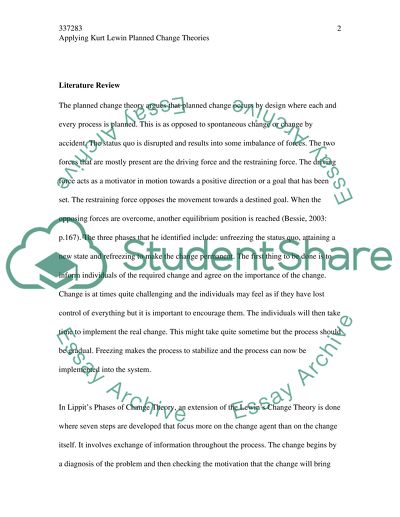Cite this document
(“Kurt Lewin Planned Change Theories Essay Example | Topics and Well Written Essays - 2250 words”, n.d.)
Kurt Lewin Planned Change Theories Essay Example | Topics and Well Written Essays - 2250 words. Retrieved from https://studentshare.org/psychology/1524732-kurt-lewin-planned-change-theories
Kurt Lewin Planned Change Theories Essay Example | Topics and Well Written Essays - 2250 words. Retrieved from https://studentshare.org/psychology/1524732-kurt-lewin-planned-change-theories
(Kurt Lewin Planned Change Theories Essay Example | Topics and Well Written Essays - 2250 Words)
Kurt Lewin Planned Change Theories Essay Example | Topics and Well Written Essays - 2250 Words. https://studentshare.org/psychology/1524732-kurt-lewin-planned-change-theories.
Kurt Lewin Planned Change Theories Essay Example | Topics and Well Written Essays - 2250 Words. https://studentshare.org/psychology/1524732-kurt-lewin-planned-change-theories.
“Kurt Lewin Planned Change Theories Essay Example | Topics and Well Written Essays - 2250 Words”, n.d. https://studentshare.org/psychology/1524732-kurt-lewin-planned-change-theories.


